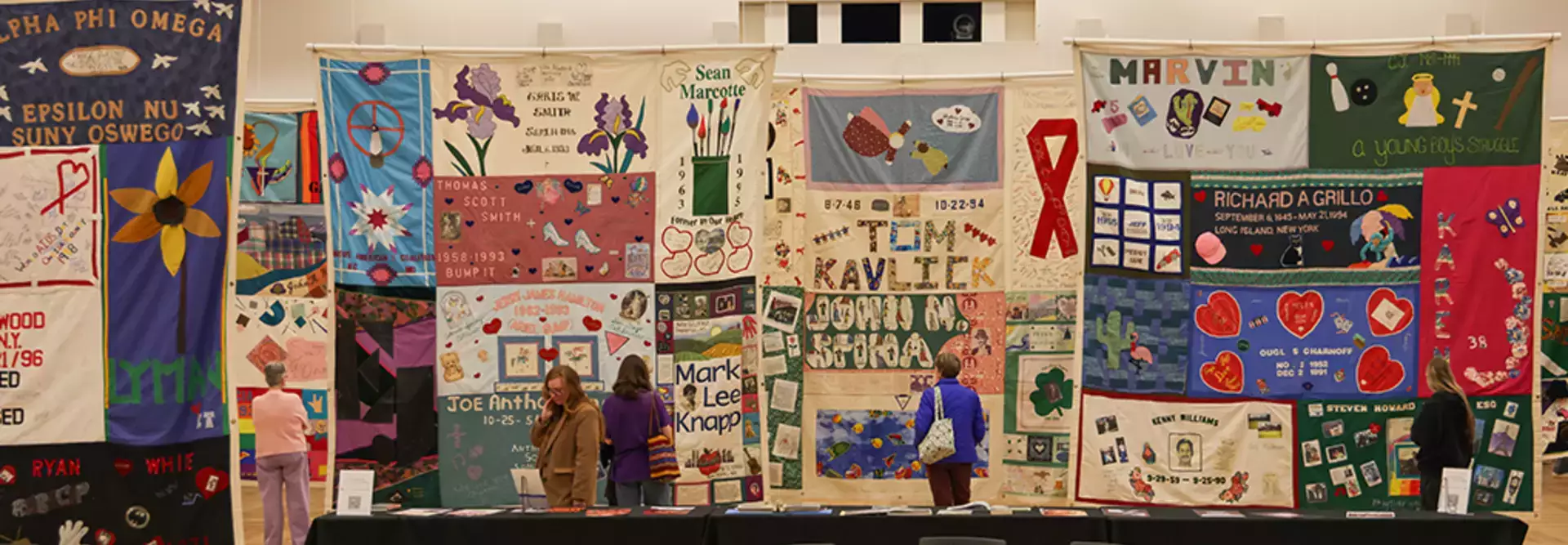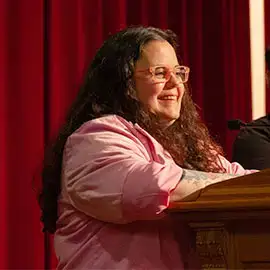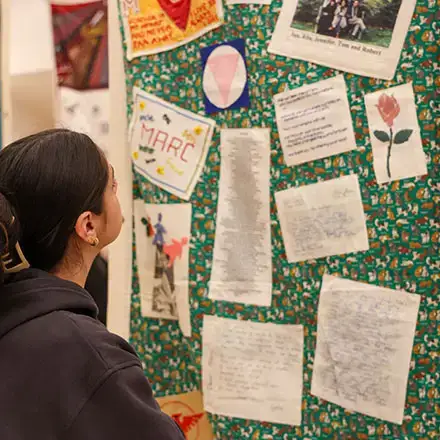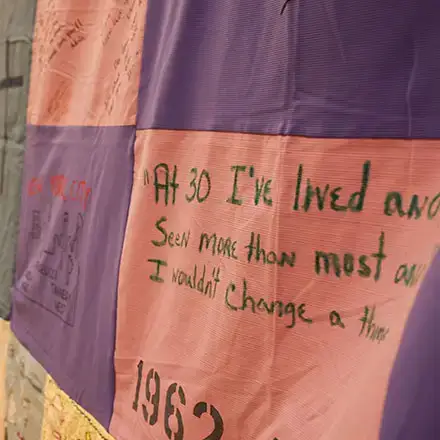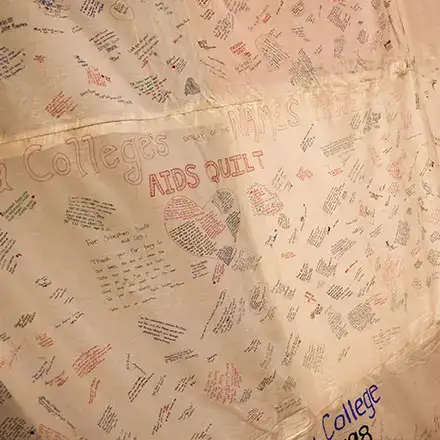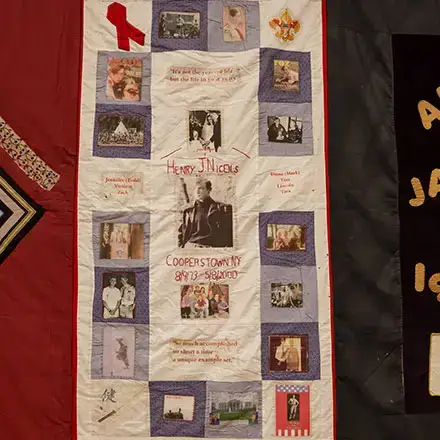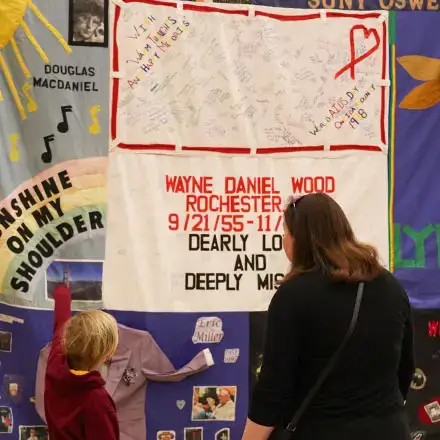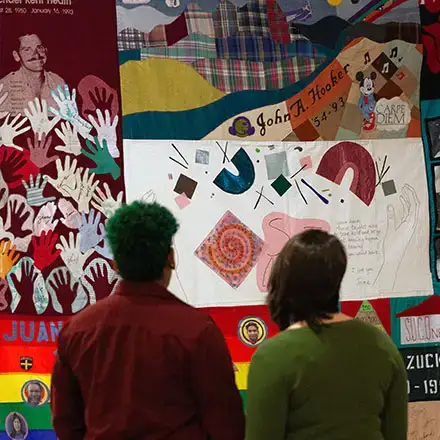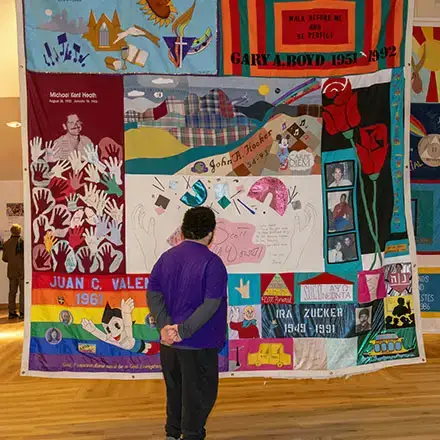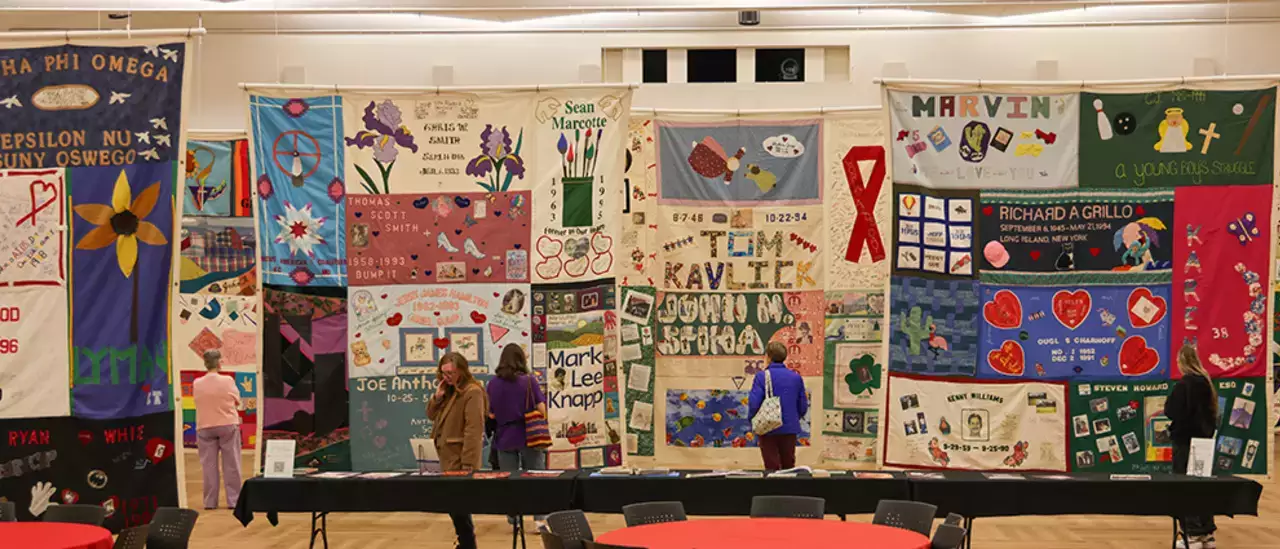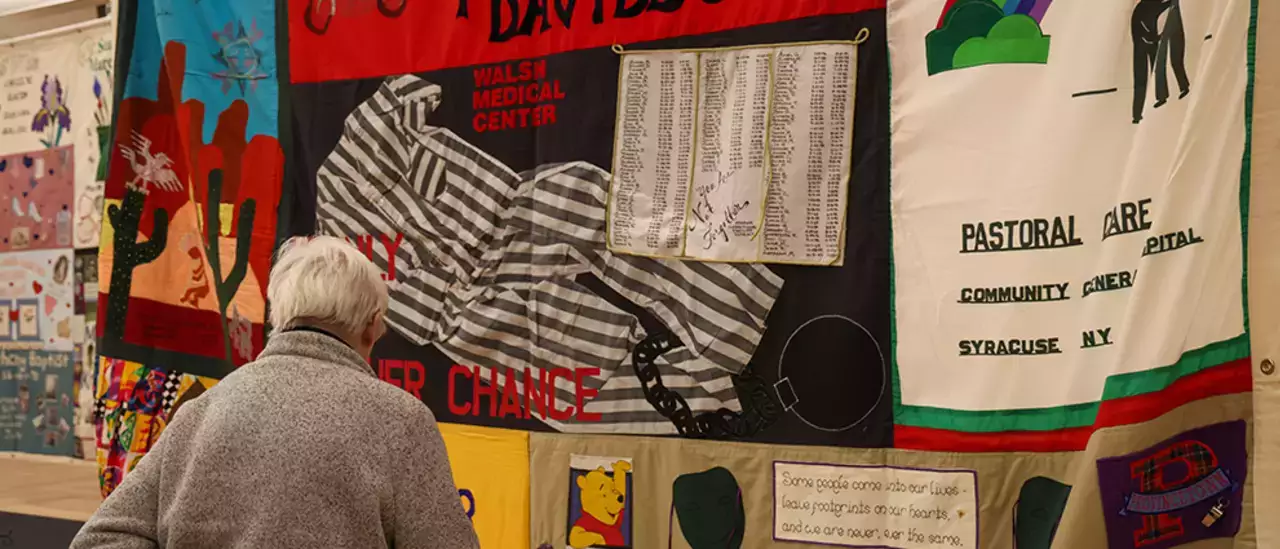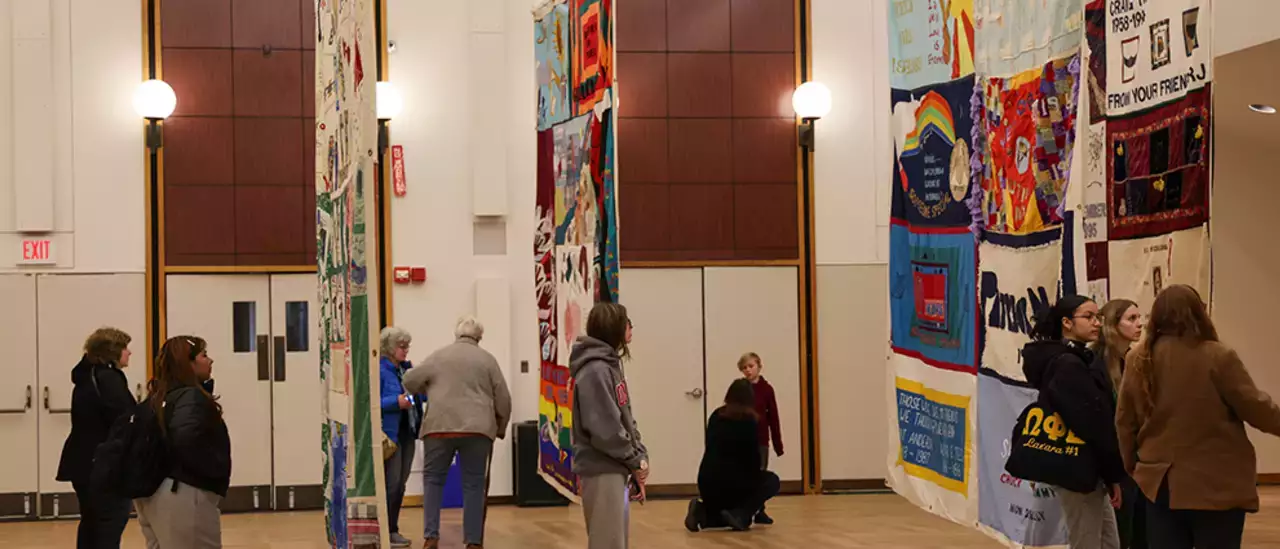Twelve of the nearly 50,000 panels of the National AIDS Memorial Quilt filled the Hunt Union Ballroom at SUNY Oneonta from March 21-23, each stitch and patchwork square telling a story of lives lost to the AIDS crisis. For many, including SUNY Oneonta student and Otsego Pride Alliance Vice President Kerri Lincoln, the quilt’s arrival was not just a powerful tribute but a deeply personal mission.
Lincoln, a Women’s and Gender Studies major and Oneonta local, began her journey to bring the quilt to Oneonta nearly a year and a half ago. Inspired by a conversation with one of her children, she realized that the AIDS Quilt was becoming a fading memory for younger generations. Determined to change that, Lincoln took it upon herself to bring this piece of history closer to home.
Securing the quilt required persistence and began about a year and a half earlier. Lincoln worked with the National AIDS Memorial to meet the requirements for hosting a display and coordinated multiple fundraisers to cover expenses. Basket raffles and community donations played a vital role in making the project possible. Lincoln also collaborated closely with SUNY Oneonta’s faculty and staff, who provided support throughout the planning process and assisted with the installation itself.
“Stitching Resistance”
As a nontraditional student, Lincoln worked with Assistant Professor of Women's and Gender Studies Dr. Chloe Diamond-Lenow to incorporate the AIDS Memorial Quilt into her independent study course. Lincoln’s coursework included research about the quilt’s creation and significance, organizing its display and using it as a text to explore intersectionality, public health and art as resistance.
“Kerri took Intro to Queer Studies with me last semester. In the class, one of the assignments for students is to do a research project where they look at the history of a queer trans activist,” said Dr. Diamond-Lenow. “Kerri chose to research Cleve Jones, the initial creator of the AIDS Memorial Quilt, and called the project “Stitching Resistance”. At that time, she already knew she was bringing the quilt to campus. So we created a 4000-level independent study course, which gave us more opportunities to have one-on-one conversations. I was really just there to support Kerri in organizing the event. But we also framed the AIDS Quilt in relation to queer studies and queer theory.”
Community, Memory and Reflection
The quilt’s arrival was deeply emotional for Lincoln. Seeing the panels unfold, including one featuring Henry Nicols of Cooperstown, underscored the personal connection this project held. Nicols, who contracted HIV as a child through a hemophilia treatment, became a prominent AIDS activist before passing away in 2000. His father, Hank Nicols, attended the event as a speaker, adding another layer of meaning to the display.
For Lincoln, memorable moments extended beyond the installation itself. Conversations with visitors revealed how deeply the quilt resonated with those who viewed it. Attendees shared memories of loved ones lost to AIDS, and some expressed gratitude for the opportunity to reflect on a chapter of history that has too often been overlooked.
The quilt’s presence also served as a reminder of ongoing struggles. Lincoln expressed concern about recent cuts to HIV research and prevention efforts, emphasizing that the need for awareness and advocacy remains crucial.
